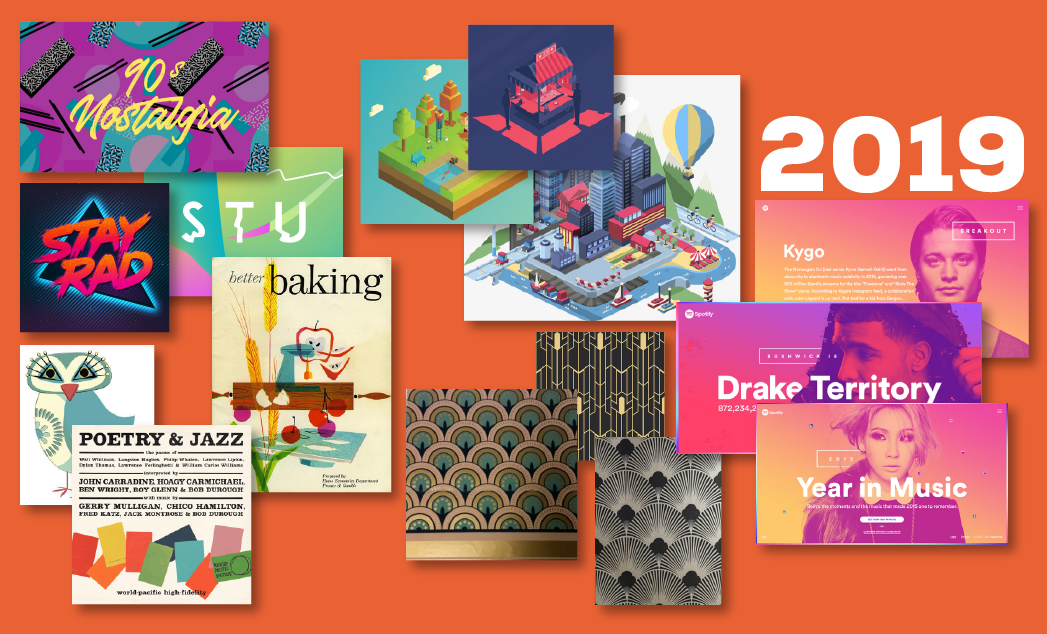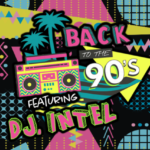10 Marketing and Design Trends Coming in 2019
It’s time to start thinking seriously about your brand in 2019.
No doubt you’re reflecting on 2018’s successes and failures as you look ahead to 2019’s budgets and goals. That’s a good thing. But you can’t just ride 2018’s coattails if you’re going to thrive in 2019. Not with how quickly the marketing and design landscapes change.
These are the marketing and design trends we’re getting ready to tackle in the new year:
DESIGN: Art Deco
This post-WWI art and design style exploded in popularity about a century ago, making it a perfect candidate for a comeback in a big way. Design, like so many other things, is cyclical. This Great Gatsby-esque design style with its complex line work and sans-serif fonts is a perfect foil to the flat, minimalist design that has been on trend for the last five or so years.
MARKETING: Authenticity and Transparency
If you read an ad that sounded too good to be true, how would you respond? Would you take it at face value and buy the product or take 20 seconds to Google the product? Good brands are finally coming to terms with the fact that consumers’ BS filters have never been more fine-tuned. People appreciate not being taken for fools! Two great examples are RX Bar and Everlane. RX Bar famously prints the ingredients of their snack bars prominently on the front of their packaging. Everlane actually lists their costs on their website so buyers know exactly how much markup they’re paying.
DESIGN: Midcentury
This design trend is already extremely popular with interior design and has made its way into the graphic design world too. Midcentury modern principles were conceived on the idea that the function of a design should drive the form, but that doesn’t mean the form itself can’t be beautiful. You’ll be seeing a lot of midcentury art and color palettes from brands in the coming year.
MARKETING: Innovation > Emulation
Consumers face such an onslaught of advertising stimulus every day that ubiquitous ads in traditional channels are little more than white noise. The best way to engage consumers is with creative and innovative approaches that are unexpected. But that doesn’t necessarily have to mean new approaches. Some of the most successful brands have actually started to invest more marketing dollars back into older media like print simply for the fact that others have written them off entirely. The lesson to be learned is that it’s not necessarily about having the most creative ad in a room full of other ads, but to be in a different room entirely.
DESIGN: Duotones, Gradients and Rich Color Palettes
It seemed like color gradients fell off the face of the earth when vector graphics came into vogue over the last decade. This was especially true for logo design; flat graphics and solid colors ruled the land. Perhaps to combat the droll nature of flat and minimalist design, many brands are moving back to brighter colors and color transitions in their graphic styles to stand out.
MARKETING: Engaging Customers in Their Language on Their Turf
Brands no longer have the luxury of being the best just by being the loudest. In other words, you can’t win sales just by bombarding people with ads anymore. You must understand your audience and engage them on their terms or they’ll move on immediately. People claim to not like tailored ads that target them based on their buying habits, but the numbers suggest the opposite. Customized ads on platforms like social media work so well because they exist on channels where people spend lots of time and they’re presented to them just like the content they love.
DESIGN: 90s Throwback
It’s official—the 90s now qualify as old school. We apologize if you suddenly realized how old you are like we did. There’s no denying that 90s style is coming back in a big way. The return of vivid colors and gradients that we already mentioned is probably a byproduct of this trend. We’d argue that 90s design styles aren’t making a comeback because they’re vintage, but because of nostalgia. Why? The old axiom goes that the movers and shakers of the consumer economy at any given time are predominantly 35-50 year olds. A significant chunk of this population was coming of age—you guessed it—in the 90s.
MARKETING: High-Quality Content
It’s no secret that consumers demand more honesty and authenticity from brands and the advertising landscape has already begun to reflect that. The best brands don’t just communicate their story through ads anymore; they actually create value for customers. Content is a picture-perfect fit to fill this need, and companies are tapping into things like blogs and social media to eschew annoying salesmanship and build their brand. People who engage with a brand’s content are far more likely to buy from them over companies that only use traditional advertising that doesn’t provide any value to the consumer.
DESIGN: Isometric
Isometric designs create lots of dimension without needing realism. Technically speaking, isometric design refers to any kind of 3-D rendering without perspective angles. Some say this is a product of 90s design coming back (think Sim City). Some say it’s part of the movement away from flat, iconographic design (think logos for mobile apps). Whatever the reason, this style of illustration is so compelling because it creates abstracted depth and texture. It’s also a great way to illustrate something and create a real sense of place without excessive detail.
MARKETING: The End of the Millennial Fetish
Sadly it took many companies about five long years to realize that Millennials aren’t the only demographic that their brand should be concerned with. The more important phenomenon to understand is how Millennials just happened to be the generational flavor of the month during the period when mass media was undergoing one of the biggest, most rapid changes in history. As we mentioned earlier, the core of the consumer economy is made up 35-50 year olds, not any particular generation. Here’s to hoping this also marks the end of those lazy “Millennials Have Killed “ headlines, too.
















